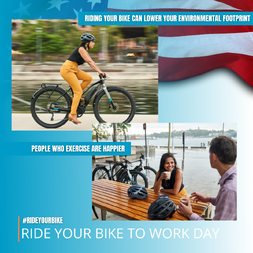Understanding Bike Lights 101

Lights are a bike part that we quite often don’t give much thought about. It can be seen as a basic part of your arsenal that helps you stay safe on the roads. But bike lights are so much more than that. Not only when you’re riding in the dark, but daytime lights help you asserting your presence on the road to other users. If you’re wondering how to pick the best light for you, we break down the jargon and you’ll be an expert in just a couple of minutes.
What are lumens?
Most bike lights will tell you how strong they are in lumens, and many will be practically screaming it from their packaging. We can all appreciate that 500 lumens are more than 300 lumens, but what are lumens? Lumens are a measurement of the amount of visible light to the human eye.
There is now also an aspect called “useful lumens”. Useful lumens is a rating created by the EU and is designed to bring you a clearer and easier way to pick the correct light. Think of a household bulb, and how it sends out light in all directions. The collected total of that may be 850 lumens, but where you are sitting directly under the light, it may only be 300 lumens. The useful lumens is then 300 lumens. Some bike lights have counted their spread of light for their claimed total lumens. What you need to know is how much is concentrated where you need it to see the road.
In the end, you want the light with the most lumens. Well, not quite.

Bike light modes
Bike lights come with different light modes. When you start to go through the modes, bike lights suddenly stop being as simple as you thought they were. Although most people will just put their lights on their bike and never give their modes a second thought, taking the time to check through your modes will keep you safer on the road.
To flash or not to flash?
The majority of people will set their lights to a flash mode to grab a driver’s attention when riding on the road, but there are a few things to consider:
- Depending on where you live that may be illegal, so check your local laws.
- Makes it harder to see the road clearly.
- Makes it harder for drivers to judge their distance to you.
Now, you might be thinking “just to use steady light”. But there are also things to consider with this:
- The main one is that your light’s battery life will deplete quickly, especially if you use it in a high power setting. It’s safer when it’s dark, or you’re riding offroad.
- If you use a lower power setting, you will save battery life but other road users might not take notice of you.
The easiest way to get around this is to buy a high-quality front light, with a large battery, and get a cheap front light. Use the high-quality light to show you the way and use the flashing light to draw attention to you. You can also use this trick for rear visibility.
It is also better at the rear to place the lights at differing heights. One lower down, this being the steady light as it’ll be more like a car light. Then a flashing light higher up. The two lights being at varying heights make it easier for drivers to identify you as a cyclist and to judge their distance to you.

During the day
During the day, you hopefully won’t need to be lit up quite as well, and you should be able to see the road around you. In this case, you want a light that has a daylight mode. Our range of Entity lights features a daylight mode. Daylight mode is just there to remind inattentive drivers that you’re there. Yes, you shouldn’t need them, but it is better to be safe than sorry.
If you have any questions about what lights you should purchase, feel free to contact our gearheads and we will point you in the right direction.
Leave a comment
- Training Tips for a Beginner Cyclist
- Industry Reviews
- Bikepacking 101
- Worth-it Blogs EP#2: Hardtail Hitters
- Bikes Online Does Sea Otter
- EWS #5: Burkville
- Drop bar Buyer's Guide
- The Bicycles Online's Company Fitness Challenge
- Mountain Bikes Buyer's Guide
- Sustainable Strategies
- Worth-it Blogs EP#3: Budget Hardtail Upgrades
- Commuter Bike Guide
- Pinned With Polygon | The gang goes to Crankworx
 USA
USA AUS
AUS
















.jpg)









